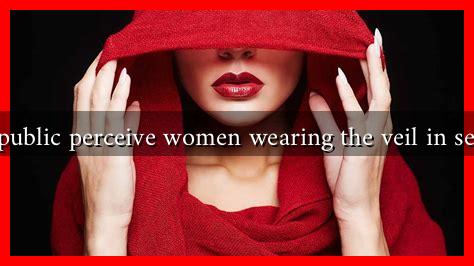-
Table of Contents
- How Does the Public Perceive Women Wearing the Veil in Secular Contexts?
- The Veil: A Symbol of Identity and Faith
- Public Perception: A Mixed Bag
- Case Studies: Global Perspectives
- Statistics and Surveys: Insights into Public Opinion
- The Role of Media and Representation
- Conclusion: Navigating the Complexities of Perception
How Does the Public Perceive Women Wearing the Veil in Secular Contexts?
The veil, a garment worn by many Muslim women, has become a focal point of debate in secular societies. The public perception of women wearing the veil varies significantly across different cultures and contexts, often influenced by political, social, and historical factors. This article explores how the veil is perceived in secular contexts, examining the implications for women’s rights, identity, and societal integration.
The Veil: A Symbol of Identity and Faith
For many women, the veil is not merely a piece of clothing but a profound expression of their faith and identity. It serves as a symbol of modesty and religious commitment. However, in secular societies, this expression can be met with mixed reactions. Some view the veil as a sign of oppression, while others see it as an assertion of personal choice and autonomy.
Public Perception: A Mixed Bag
Public perception of women wearing the veil in secular contexts can be categorized into several viewpoints:
- Oppression vs. Empowerment: Many critics argue that the veil symbolizes the oppression of women in patriarchal societies. Conversely, advocates assert that wearing the veil can be an empowering choice, allowing women to reclaim their identity.
- Integration vs. Segregation: Some perceive the veil as a barrier to integration within secular societies, suggesting that it creates a divide between communities. Others argue that it can coexist with secular values, promoting multiculturalism.
- Fear and Stereotyping: The veil is often associated with negative stereotypes, particularly in the context of terrorism and extremism. This association can lead to fear and discrimination against women who choose to wear it.
Case Studies: Global Perspectives
Different countries have adopted varying stances on the veil, reflecting their unique cultural and political landscapes. Here are a few notable examples:
- France: France has implemented strict laws banning the full-face veil (niqab) in public spaces, citing secularism and public safety. This has sparked significant debate about religious freedom and women’s rights.
- Canada: In contrast, Canada has generally embraced multiculturalism, allowing women to wear the veil in public. However, debates continue regarding the visibility of religious symbols in government settings.
- Germany: Germany has seen a rise in anti-immigrant sentiment, leading to increased scrutiny of women wearing the veil. While some regions have proposed bans, others advocate for tolerance and acceptance.
Statistics and Surveys: Insights into Public Opinion
Surveys conducted in various countries reveal a complex landscape of public opinion regarding the veil:
- A 2019 survey by the Pew Research Center found that 62% of respondents in France viewed the veil as a symbol of oppression.
- In Canada, a 2020 survey indicated that 70% of Canadians supported the right of women to wear the veil, reflecting a more inclusive attitude.
- In Germany, a 2021 study revealed that 55% of respondents believed that the veil should be banned in public institutions, highlighting a divide in public sentiment.
The Role of Media and Representation
The media plays a crucial role in shaping public perception of women wearing the veil. Often, portrayals can reinforce stereotypes or challenge them. Positive representation in films, literature, and news can foster understanding and acceptance, while negative portrayals can perpetuate fear and discrimination.
Conclusion: Navigating the Complexities of Perception
The public perception of women wearing the veil in secular contexts is multifaceted and deeply influenced by cultural, political, and social factors. While some view the veil as a symbol of oppression, others see it as an expression of identity and autonomy. As societies continue to grapple with issues of integration, multiculturalism, and religious freedom, it is essential to foster dialogue and understanding. Ultimately, the veil should be recognized as a personal choice, reflecting the diverse experiences of women around the world.
For further reading on this topic, you can explore resources from the Pew Research Center and other academic studies that delve into the complexities of religious attire in secular societies.


